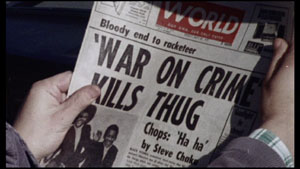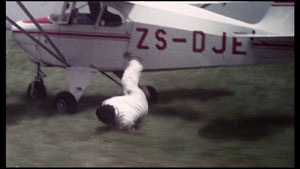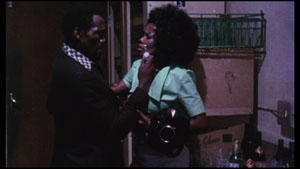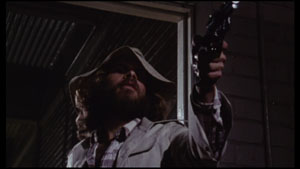The carcasses of known drug dealers are starting to pile up around Johannesburg, South Africa. While initially thought to be nothing more than opposing cartels killing one another, news reporter Steve Chaka is sent a letter by those committing the murders: a vigilante group calling itself War on Crime. Lucky for Chaka, his best friend just happens to be Ben Deel, a police lieutenant, and he’s more than happy to work with him to find out who exactly is behind the group; the fact that War on Crime is feeding Chaka bits of information on upcoming drug deals doesn’t hurt matters either. But when the group starts to reel in their information, the police force Deel to stop working with Chaka, wondering if he’s been playing them all along. Now on his own, Chaka is determined to get the whole story…even if it costs him his life.
 |
 |
Death of a Snowman has all the hallmarks of a solid 70’s Blaxploitation flick: a funky, groovy soundtrack, drug runners killing one another, a black man in the crosshairs simply because of his skin color (even in South Africa!), vigilante killing, and more. Yet sadly, all of these tried-and-true elements of the genre don’t come together as swimmingly as one would hope. The film’s biggest issue is its pacing. While absolutely nothing going on in the film says anything other than this being drive-in trash, it really seems as if those involved behind the scenes wanted something else, as for every scene we get of people getting blown away and being tossed from planes, we’re forced to sit through Chaka sitting at his typewriter pecking out stories about the political climate of his country and Lt. Deal parked in his car staking out criminals. It’s all really quite uneven, and it feels as if someone involved didn’t want to completely commit the film to pure exploitation and instead was attempting to elevate it to a conspiracy or even a political thriller.
 |
 |
None of this works though because the film is so terribly put together, making the more sincere dialogue heavy scenes fall flat on their face. But if you wait just long enough, you’ll be treated to one of a number of action sequences that are awesome for all the wrong reasons. They’re totally ridiculous, with nearly every scene featuring some poor sap being shot or pushed through a window, wall or office divider. I’m pretty certain someone had some leftover props to play with and the director was determined to use every last one of them. Most of the characters are pretty forgettable, outside of a white, suave hitman that shows up about midway through the film that serves little purpose to the story other than looking cool as hell; he’s played by Bima Stagg, who also wrote the film, so that may explain something. Toss in some outrageous dubbing (there are multiple occasions where someone is facing the screen yet it sounds as if they’re facing the other way) and the occasional line of hilariously out of place highbrow dialogue, and Death of a Snowman could certainly scratch your next Blaxploitation itch; just make sure you’ve already exhausted all of the better genre films first. Synapse Films’ release presents the film in 1.66:1 anamorphic widescreen, and does just about the best it can with the rough source material they had to work with. Washed out colors, tons of print damage, and very murky dark scenes all rear their ugly head, but knowing Synapse, this is the very best they could do with what was given to them. The Dolby Digital mono track is about on par with the visuals, rough around the edges but it gets the job done. Audio drops out occasionally, but it’s clear that’s more to do with how cheaply it was recorded in the first place. Subs would have been nice, as a few of the character’s accents are pretty thick. The only extra on board is a theatrical trailer that I wouldn’t advise watching first, because as was par for the course for 70’s grindhouse cinema, it lays the entire film out for you in under four minutes.
Please feel free to discuss "Death of a Snowman" here, in our forums!